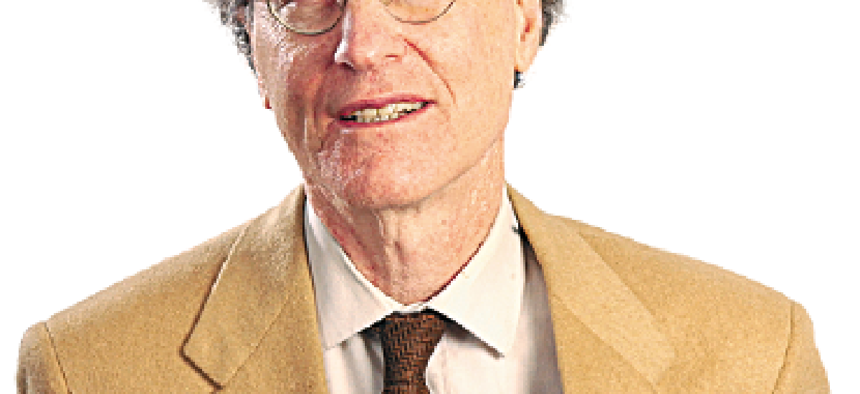How a Taiwanese government innovation could solve a peculiarly American problem

An anonymous government official solved a dispute of historical memory that threatened to tear the social fabric of a society just as it embraced democracy.

The latest excuse for Americans to divide themselves into warring camps is over the fate of Confederate Civil War monuments. One camp says these are offensive lionizations of slaveholders, while the other says they are part of our heritage and that taking them down disrespects our history.
I will confess that, as for my personal opinion, if asked to choose between the sides, I would go for the first, though a majority of Americans back the second.
But it turns out that, according to a story in Hong Kong's South China Morning Post, the government of Taiwan has come up with an innovative solution to a similar problem the country has faced over the island's 200-odd statues of Chiang Kai-shek, the nationalist leader who lost a long civil war to the Communists in 1949, leaving his battered army to flee to the small island of Taiwan off the coast of China.
Chiang Kai-shek is, actually, not a particularly controversial figure in China today. But he remains controversial is on Taiwan itself. For many Taiwanese, he represents the oppression of the native Taiwanese majority by people from the mainland. Taiwan was a Japanese colony from 1895 to the end of World War II, and after Japan's defeat, Chiang's mainland government took control of the island. In 1947 protests broke out in Taiwan by native Taiwanese against the corruption and misrule by Chiang's government. The government brought soldiers from the mainland to quell the protests, and murdered perhaps as many as 28,000 Taiwanese, including an entire generation of local leaders and professionals. After 1949 the relatively small group of mainlanders who fled to Taiwan after Chiang's defeat dominated government and society. For decades, the country was under martial law.
Fast forward to the late 1980s, when Taiwan made an amazing peaceful transition to democracy, and developed what was essentially a two-party system, with a new party representing more ethnically conscious Taiwanese and advocating Taiwan's independence, and the KMT (Chiang's old party) representing the ex-mainland minority and business. Taiwan held its first free presidential election in 1996, and in 2000 the opposition pro-independence party won the presidency. Since then, power has shifted twice between this party and the KMT.
Left over from the Chiang era (he died in 1975) was a very emotional battle about his proper standing in Taiwan's history. Also left over were hundreds of statues of Chiang, appearing in schools, government offices, and public places. What should be done with them? Some said of course they must be taken away, others that of course they must remain. (Sound familiar?) And this was a dispute not amenable to a split-the-difference compromise; after the fall of Communism in eastern Europe, some Communist-era statues were literally toppled by angry demonstrators.
But some anonymous government official in Taiwan came up with an innovative idea for what to do with the statues: take them away from their previous locations and move them to a new park, specifically devoted to Chiang statues. Chiang haters wouldn't need to see them anymore. Chiang fans could visit the park and pay their respects.
And that's what the government did.
Pretty creative idea, right? The word "out of the box" is a dramatically overused cliché, but it applies here. Whoever thought this up came up with a solution that transcended existing thought categories. Let's hear it for the Taiwan government for demonstrating the potential for innovation in government.
I see two messages here. The first is that there are opportunities for innovation in government everywhere around us.
About a year ago, I blogged about a fun innovation in Paris railroad stations: used pianos were installed that could be played by any passer-by who wanted to entertain those walking through the station. The idea of the post, titled Innovation in Government Can Come from Anywhere, was that innovation is possible, even in a stodgy organization like the state-owned French railways.
The natural tendency in an emotional dispute such as the one in Taiwan or the one over Confederate monuments is for the two sides to dig in and just fight it out. But, with creativity, innovation is possible there as well. In that earlier blog, I urged government folks to ask themselves where opportunities for innovation might exist in places around them they ordinarily might not consider. The Taiwan statue story illustrates the same point, and I repeat the message here.
The second message is that in scanning for innovations that we might be able to use in government, we should not limit our sights, as we Americans tend to do, to our own country. Almost three years ago I wrote a blog called Government Tech Lessons from the Far East, which focused on the use of smiley face touchpad rating systems used in airport immigration clearance and other public facilities. I pointed out in the blog that these systems had started in Asia and – at the time – did not exist in the US. This is now changing, as US organizations are learning from foreign experience. (Just last week, I encountered a smiley face touchpad after clearing Customs and Border Protection returning from abroad at the Dallas-Fort Worth airport.)
Reading other accounts of the fate of the Chiang statues, it may be that the South China Morning Post article gave too sanguine a view of the statue situation. Not all Chiang statues have been removed, and political controversies continue over proposals to remove still-present statues from their original locations. So we should probably not predict that a similar decision in the US would end the Confederacy controversy completely. But clearly this innovation has dampened tensions considerably. That would surely be a good result here as well.





